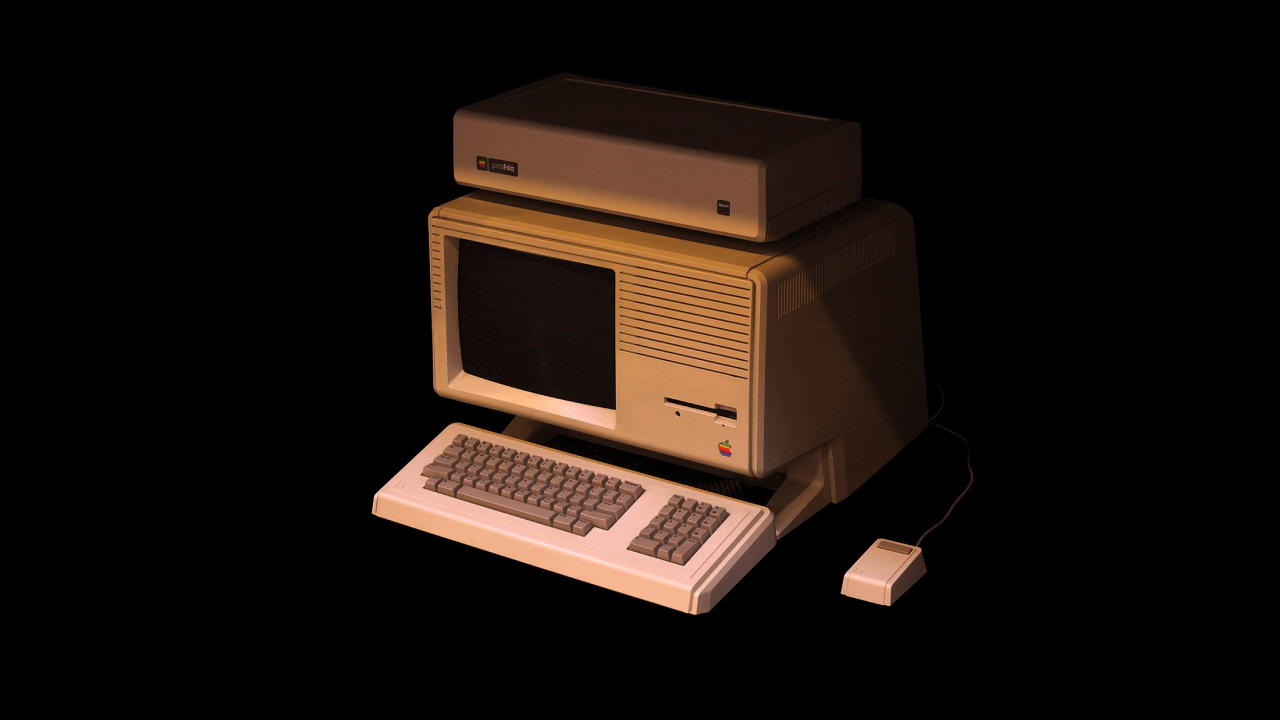Apple introduced the Lisa 2 in January 1984. It was an upgraded version of the original Lisa, which was introduced early in 1983. Billed as one of the line of “Apple 32 SuperMicros”, the Lisa 2 was sold as Apple’s business solution, supplanting the Apple III and sharing the spotlight with its close cousin, the Macintosh. Its price was drastically reduced from about $10,000 for the original Lisa to between $3,500 and $5,500 depending on the configuration. The Lisa 2 was renamed Macintosh XL in January 1985. The Macintosh XL contained Apple ROMs and could run Macintosh software. The Lisa 2 could run Macintosh software using MacWorks Mac Emulator. The Lisa platform was never able to establish a market niche. IBM controlled the business market and Apple was increasingly moving the company to the Macintosh as its standard setter. Apple finally discontinued the Lisa platform in August 1986.
The Lisa 2 could run the Lisa Office System, a GUI environment similar to Mac OS, MacWorks Mac Emulator, or the Workshop. While the Lisa Office System was the primary GUI environment for end users, the Workshop was an entirely text-based program development environment that used a GUI text editor.
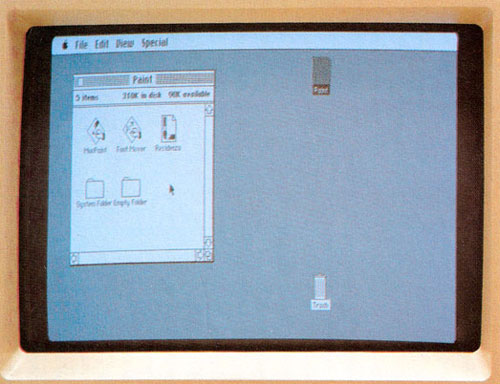
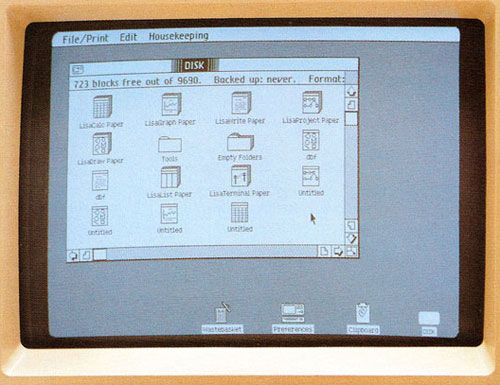
Apple offered three Lisa 2 systems: Lisa 2 ($3,495), Lisa 2/5 ($4,495), and Lisa 2/10 ($5,495). The essential difference among the Lisa 2 systems was memory capacity. Different memory size reflected the type of hard drive each system had or whether it had one at all. The Lisa 2/10 came with a 10 MB internal hard drive connected to an internal parallel connector. The Lisa 2/5 came with an external 5 MB ProFile hard drive, but no internal hard drive. The external hard drive connected to an external parallel port. The Lisa 2 did not have a hard drive, but like the Lisa 2/5, it had an external parallel port.
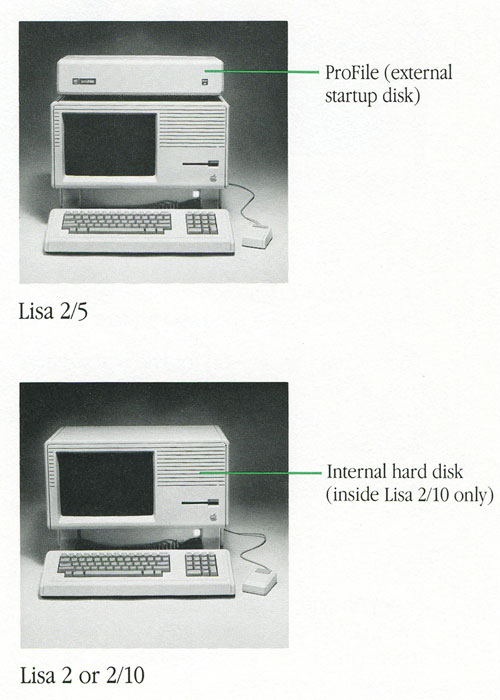
The Lisa 2 system consisted of three separate components: the keyboard, the mouse, and the cabinet containing the computer itself; the video screen, and the floppy disk drive. The Lisa 2/5 system also had an external ProFile hard drive that could be placed on top of the system.
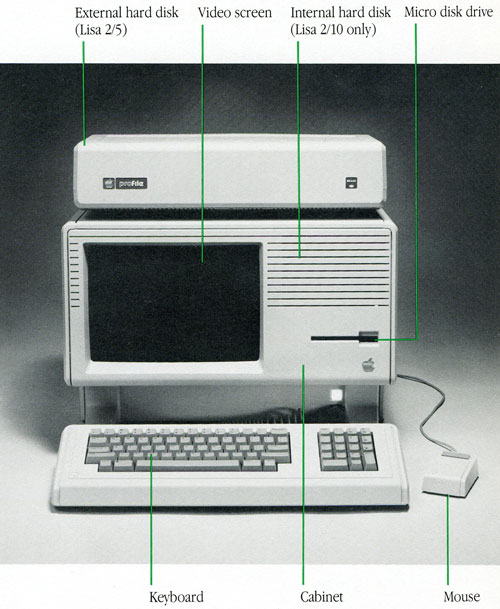
The Lisa 2 had the following built-in ports: parallel connector (only on Lisa 2 and 2/5), video out; DB-9 mouse port (keyboard connector on front); and two DB-9 serial ports. See below:


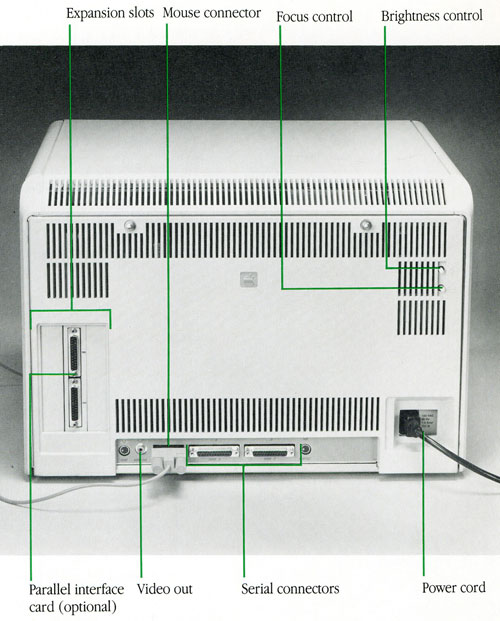
RAM could by added to the Lisa 2. This required removing the motherboard as illustrated below. The Lisa 2 could address up to 2 MB of RAM.
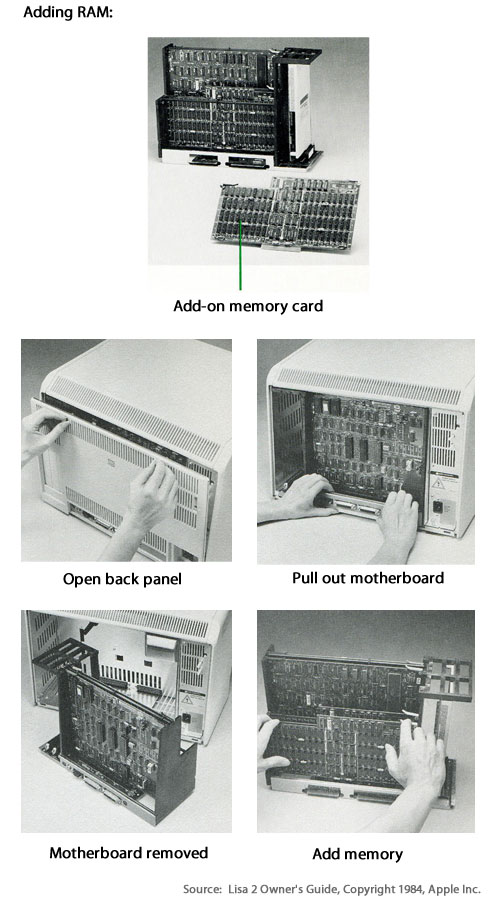
The Lisa 2 had three available parallel expansion slots. The expansion slots were assessable by removing the back panel. The process for installing an expansion card is illustrated below:
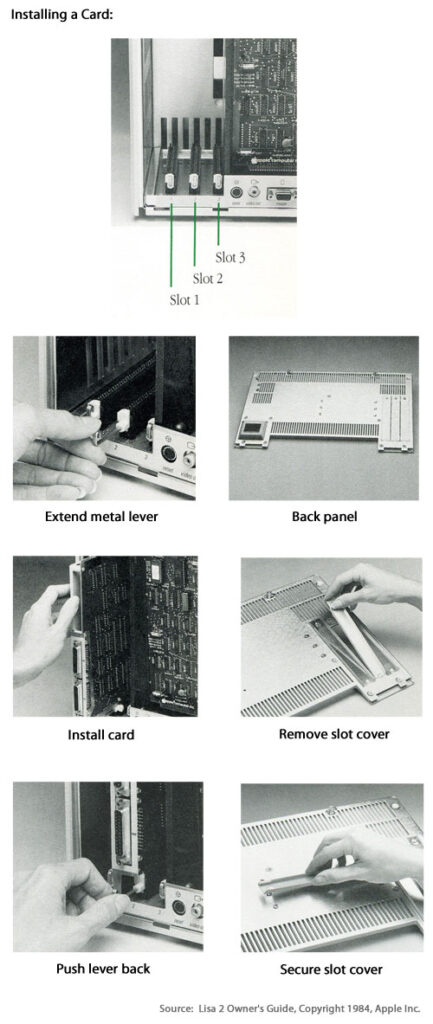
The Lisa 2’s built-in 12-inch black and white monitor was similar to the original Macintosh’s built-in 8-inch monitor, but its bit-mapping method was different. When running Macintosh software using MacWorks, images appeared about 25% taller and 14% thinner than on the Macintosh, making squares look like rectangles and circles look like ovals. The distortion was due to different pixel shapes used on the Lisa 2. The Mac used square dots and the Lisa 2 used rectangular dots and a full screen image on the Mac (512 x 342 pixels) occupied exactly the same number of dots across and down when drawn on the Lisa 2 screen. The Lisa 2 displayed 720 x 364 pixels natively. This problem further marginalized the Lisa 2 because few companies developed software specifically for the Lisa’s custom monitor. The Lisa 2’s screen automatically dimmed if no activity had taken place for several minutes. Moving the mouse or pressing the return key would return the screen to its normal contrast level. The brightness level and focus could be changed by adjusting the control knobs on back of the Lisa 2.
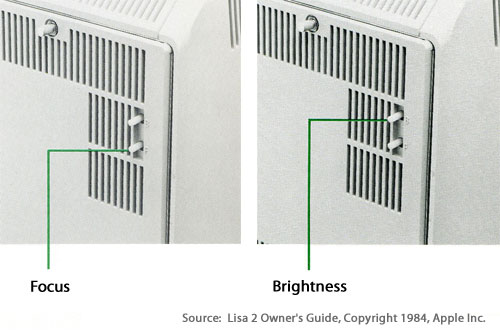
Apple replaced the original Lisa’s two problematic “Twiggy” 5.25-inch floppy disk drives with one Sony 400K floppy disk drive on the Lisa 2. The original Macintosh used the same disk drive. If the disk drive became stuck, it was necessary to remove the front panel to access the manual eject button as illustrated below.

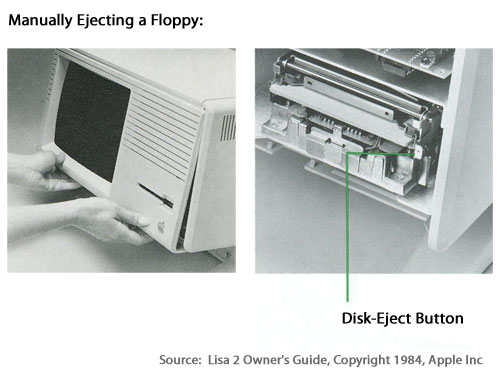
Apple recommended the Apple ImageWriter or Apple Daisy Wheel printer for use with the Lisa 2. These printers could be attached to the Lisa 2 through a modem eliminator cable attached to one of the Lisa 2’s serial ports. It had to be connected to serial port B if using Macintosh software.
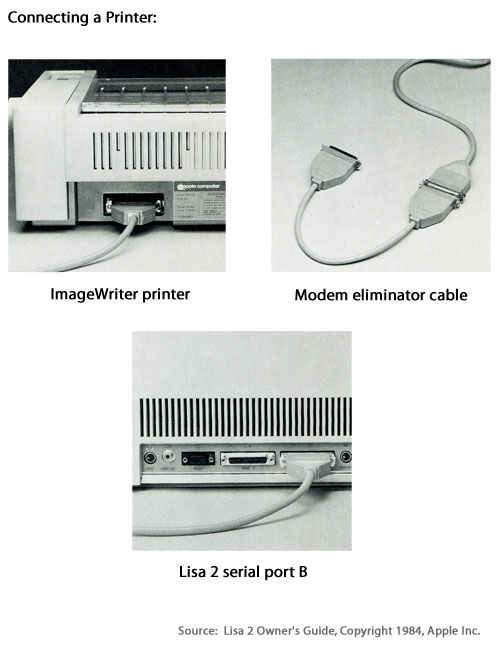
The Lisa 2 was an interesting system even though it represented a clear misstep for Apple. Apple attempted to make the Lisa platform more affordable with the release of the Lisa 2, but even at the reduced prices for the three Lisa 2 systems, its lackluster compatibility with the Macintosh doomed it to an early grave.
